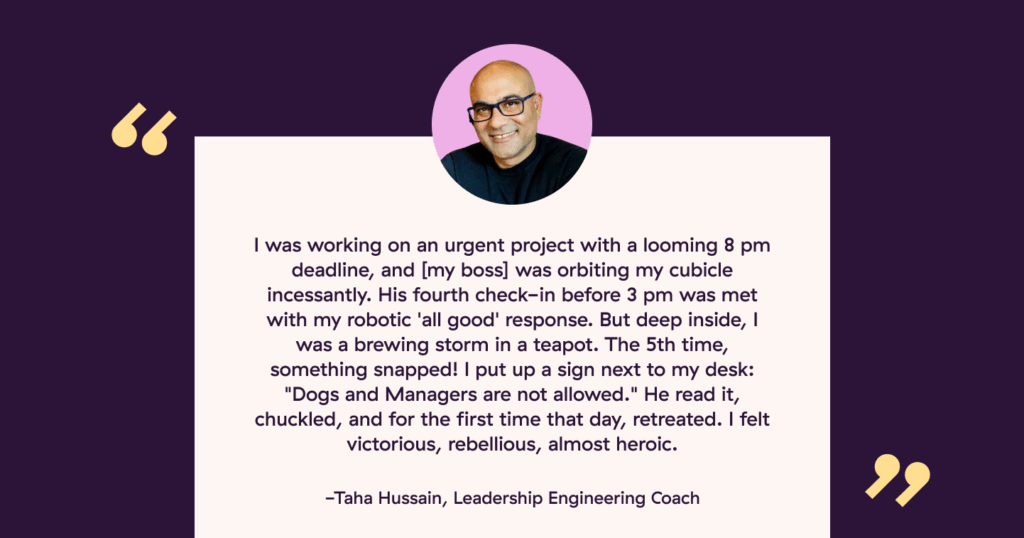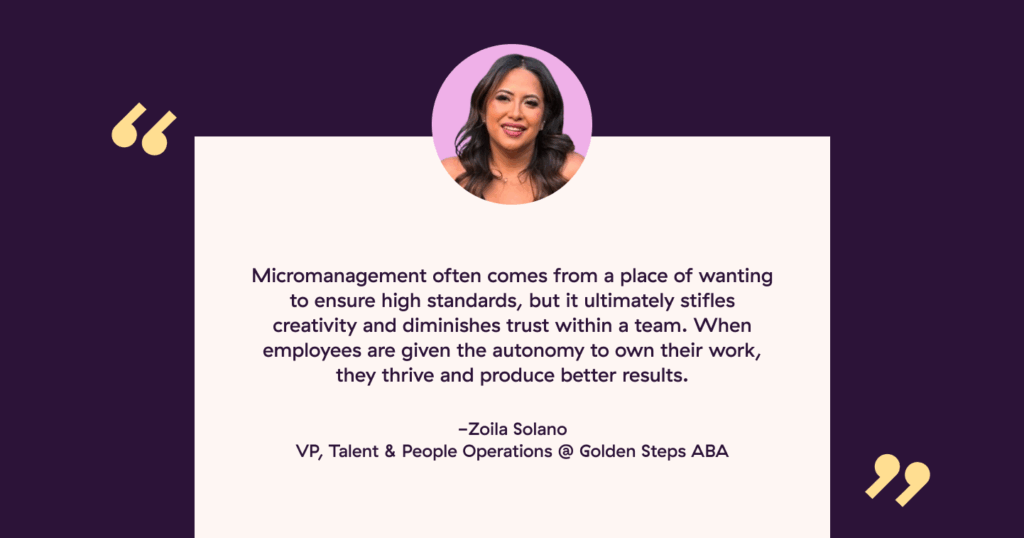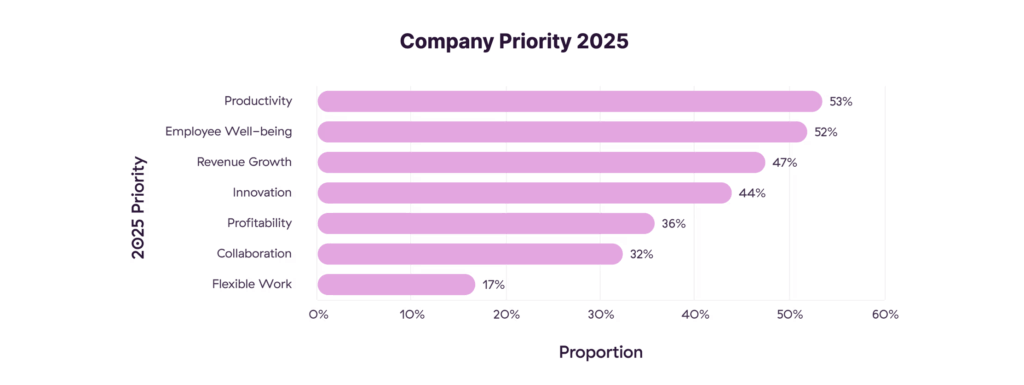Remote work might seem like a dream setup. But for many managers, it presents a tough challenge: How do you stay involved with your remote team without slipping into micromanagement?
The rise of remote monitoring tools like screen recording, keystroke tracking, and webcam surveillance make it easy to track your team’s every move. In fact, 70% of leaders admit they’re comfortable using these tools to spy on their remote employees.
But just because you can do something doesn’t mean you should — and in most cases, micromanagement does far more harm than good.
If you’re worried about crossing the line (or want to check you haven’t overstepped already), this guide is for you. We’ll explore micromanagement in remote settings, including how to recognize the red flags and build a high-performing team without constant oversight.
TL;DR — Key Takeaways
- There’s a fine line between staying informed and taking control. Set clear goals and expectations, then give your team space to deliver. Check in at planned intervals, not every time someone breathes.
- You might be a micromanager if you constantly monitor your team’s availability, struggle to delegate tasks, give step-by-step instructions for simple tasks, rework every deliverable, and react negatively to minor mistakes.
- Micromanagement can lead to increased stress, reduced confidence, high turnover, slower workflows, and a lack of innovation.
- To avoid micromanaging your remote team, set clear expectations, trust your team’s process, schedule regular check-ins, provide autonomy, and give regular feedback.
The thin line between micromanagement and check-ins in a remote work setting
When does checking in on your direct report turn into micromanagement? Honestly, it’s easy for those helpful nudges to spiral into controlling behavior.
One day, you’re offering support, the next, you’re breathing down someone’s digital neck. The line between micromanagement and support is super thin, but we can spot the difference by exploring two versions of the same scenario.
Imagine you’re a Chief Human Resources Officer, and you just hired a new HR manager. You assign them the critical task of developing an onboarding plan for a new role.
Micromanagement approach
You assign the task and check in daily to monitor progress. Before the work is finished, you offer feedback, suggest how you would approach it, and compare their version to your past work.
It might feel like you’re being helpful and staying involved. But in reality, you’re undercutting their confidence and turning a leadership opportunity into a hand-holding session that feeds into your ego. As Tim McClure, an advertising executive, said, “Micromanagement is the opiate of the insecure manager.”
Supportive check-in approach
You assign the same task, but this time, you clearly outline what the finished product should achieve and set a reasonable deadline. You check in every few days to see if they need support, clarification, or more time.
When the deadline arrives, they deliver a thoughtful, complete plan without you hovering at every step. The outcome? In the first scenario, you take control. In the second, you build trust. Stepping back gives your team ownership of their work and allows them to grow in their roles.
Signs you’re micromanaging your team
Micromanagement often disguises itself as “just being thorough.” But over time, it chips away at morale and trust. Here are some common red flags to watch out for.
Constantly monitoring employee availability
Imagine ordering filet mignon at a Michelin-starred restaurant and pestering the chef every five minutes to check if it’s ready. You’d ruin the meal and infuriate the chef.
It’s the same in remote teams. Constantly checking if your employees are online or actively working might feel like due diligence, but it communicates a lack of trust. You may get some insights about employee productivity, but at the expense of stress and distraction.
Taha Hussain, an engineering leadership coach, recounts a clash with a micromanaging boss early in his career:

Often, this behavior stems from not understanding what your team does on a daily basis. For example, a marketing leader might think a developer being “idle” means they’re slacking when in reality, they’re deep in problem-solving mode.
Julie Chenevier, a business growth and expansion consultant, offers a theory for this disconnect: “Usually, micro-managers are simply managers with low self-esteem. As they don’t trust themselves, it’s hard for them to trust anyone else.”
Reluctance to delegate tasks
Back in that kitchen, if the same head chef insists on trying to cook every dish solo, the whole operation falls apart. And that’s exactly what happens when leaders refuse to delegate.
When you hold on too tightly to every task, you’re saying, “I don’t trust you to do this well.” It’s demoralizing and unsustainable, as explained by Zoila Solano, VP of Talent and People Operations at Golden Steps ABA:

Delegation is a sign of strength, not weakness. Your role is to set the vision and then let your team run with it.
Over-detailed instructions for simple tasks
You might feel you’ll get better results if you give detailed instructions for every bit of your employees’ work. But there’s a world of difference between setting your team up for success and scripting their every move.
For example, giving a designer a wall of text on Slack about how to set margins and which color combinations to choose is about control more than clarity.
SME coach Westley Harnett offers a simple remedy: “Micromanagers think they’re raising the bar, but they’re actually lowering morale. A simple fix? Swap ‘Do it this way’ with ‘What’s your approach?’ It builds confidence and ownership.”
Give context, define success, and trust your team to fill in the gaps. That’s how you get buy-in — and better results.
Reviewing and revising every piece of work
Constructive feedback is part of good leadership. But if you’re reviewing every task in detail, you’re controlling rather than coaching. Mike Dalisay, CEO of Codalify, recounts how easily he slipped into this bad habit:

Overcome this by occasionally providing meaningful feedback on portions of your team’s work. Instead of reviewing every single detail of their process, look at the finished product and evaluate the outcome.
Negative reactions to minor errors
How you give feedback reflects your management style. Do you often praise or criticize? When you do criticize, is it about big, impactful errors, or is it about minor details?
If you find yourself constantly nitpicking, you’re probably under a lot of pressure and want to see good work delivered every time. But if it ends up with constant arguments over minute details, it means you’re micromanaging employees, which has a negative impact across the board.
Use errors as learning opportunities for your team. But focus on the problem-solving aspect instead of attacking the person who made it.
How micromanagement kills productivity (and morale)
If you’re a manager, owner, or co-founder, you may not see micromanagement as a huge deal. Staying on top of things maintains quality and accountability, right? Wrong! In reality, micromanagement in a remote setting can have plenty of downsides.
Increased stress
When employees know you’re watching their every move, this crushes their well-being and can even cause stress and burnout. According to Forbes, 85% of micromanaged employees report a negative impact on their morale, and 36% even changed their jobs due to micromanagement.
Reduced confidence
Excessive surveillance and control force employees to stop believing in themselves and the good work they can deliver. They won’t have the confidence to tackle tasks they can do blindfolded.
Slower workflows
Micromanagement is a major timesuck that can lead to unnecessary delays. Managers waste time checking up on everything that happens during working hours, which slows down work for everyone.
Plus, your employees waste precious time explaining why and how something was done instead of delivering the work.
Lack of innovation
Micromanagement goes beyond slowing things down to silence forward-thinking ideas before they ever surface.
According to the 2025 Toggl Productivity Index, 44% of companies rank innovation among their top three most important values for improving performance in 2025. But when micromanagement takes hold, innovation stalls because people don’t feel safe to experiment or fail.

If your contributors feel you’re second-guessing them at every turn, they’ll stop suggesting new ideas. They’ll default to safe choices and do the bare minimum to avoid critique.
High turnover rates and lower retention
Trust is a top driver of employee retention. Take it away, and your people will understandably start looking for work elsewhere, all at a productivity cost to your company.
You’ll lose significant time and money hiring and training their replacement. And good luck finding that new hire if the word gets out that you’re a serial micromanager: this is a red flag for 73% of potential employees.
Overall, micromanagement slows work and drives great people out the door. Beyond being a habit, it’s often a symptom of something deeper. As marketing author and professor Philip Kotler said, “When managers overdo micromanaging of others, they probably hired the wrong people or failed to give them a clear idea of what each one is to accomplish.”
In other words, micromanagement can be overcome with better leadership. Here’s how we approach it at Toggl. 👇
Toggl tips for avoiding micromanaging your remote workers
Toggl has been remote-first since day one. Today, with 130+ team members across continents and time zones, we’ve learned how to build a high-performing, asynchronous team without constant oversight. Here’s how we avoid micromanaging:
Set clear expectations upfront
Define your project goals, deliverables, milestones, deadlines, and stakeholders early on. This avoids constant follow-ups and informs your team about the kind of output you expect.
At Toggl, we set firm quarterly goals and looser monthly goals tied to those. Managers can check in with their direct reports to keep them on track, but ultimately, trust they’ll reach their goals. It doesn’t really matter how or when they work.
Trust your team’s process
Do you care how the chef cooks your filet mignon? Or just that it tastes delicious?
At Toggl, we focus on outcomes rather than the workflows leading up to them. We encourage our team to find their own methods to work, experiment, and innovate.
One of the ways to achieve that is by using time management apps such as Toggl Track to understand how and where you invest your time without using surveillance.
According to our research, a whopping 41% of companies measure their productivity based on total hours worked. But this is a holdover from factory-floor thinking that doesn’t align with knowledge work.
Instead, we empower people to work in the way that suits them best, as long as the outcome meets expectations.
Schedule structured check-ins
Structured check-ins are more supportive than hopping on Zoom to address every single roadblock.
As a best practice, aim for a regular cadence, such as weekly team meetings and monthly one-on-one catch-ups. There’s no one-size-fits-all approach — what matters most is having a clear and consistent schedule that fits your team’s workflow and communication style.
At Toggl Hire, we typically meet biweekly. This rhythm works best for us because our expectations are already well defined, and our team members know how and when to raise blockers.
Use collaborative platforms to communicate
If you want to know what your team is up to at any given time, you don’t have to ask. Simply check your collaboration tool to see the task and its progress. Some great examples include:
- Toggl Plan: A visual project planning and task management tool with timelines and drag-and-drop simplicity.
- Trello: A Kanban-style board system great for organizing tasks and workflows in a visual, column-based format.
- ClickUp: An all-in-one productivity platform offering docs, task management, goals, and time tracking.
- Asana: A task and project tracking tool ideal for managing work across teams with clear timelines and dependencies.
- monday.com: A customizable work management platform for project tracking, workflows, and team collaboration.
Provide autonomy with accountability
Instead of constantly checking in with your team, make them accountable for their work while giving them freedom to perform well.
This is easy to achieve when you use Toggl Track, which provides time-based insights into who’s working on what, without resorting to invasive surveillance. Team members manage their own schedules while managers stay informed through transparent reporting.

You can also reinforce accountability using:
- Dashboards that show progress toward goals in real time
- Scheduled performance check-ins (for example, monthly or quarterly)
- Goal tracking tools that tie work to measurable outcomes
- Peer feedback loops to promote ownership within teams
Give positive feedback and recognition
Too often, feedback only shows up when something goes wrong. But consistently recognizing what’s going right is just as important — if not more.
83.6% of employees would feel more motivated to succeed at work, and 77.9% would be more productive if their positive contributions were recognized more frequently. So, make it a habit to acknowledge good work, celebrate wins (big and small), and highlight individual and team progress.
The more recognition your team receives, the less you’ll feel the need to constantly check their work — they’ll already be motivated to deliver their best.
Time tracking as an alternative to monitoring software (and other helpful remote tools)
When done right, time tracking can be a powerful way to improve performance and accountability — without micromanaging your team. The key? How you track time.
Some time tracking tools go to great lengths to spy on users. These types of employee monitoring software track mouse movements and keystrokes or take random screenshots throughout the day. That’s not productivity tracking — it’s digital surveillance. And in many cases, it’s worse than an in-person micromanager hovering over someone’s desk.
Tools like Toggl Track take a different approach. They give teams visibility into how time is spent without violating trust. Managers see where time is going and spot patterns across projects, while employees retain full control over their workflows and schedules.
But time tracking is just one part of a well-functioning remote toolkit. Here are some other tools for boosting clarity and efficiency across distributed teams:
- Toggl Plan for project management: Plan, prioritize, and visualize work across teams and timelines
- Slack for communication: Async messaging, team channels, and quick alignment
- Timetastic for time off management: Simple, transparent vacation and leave tracking
- Notion for knowledge management: A central source of truth for docs, processes, and team resources
- Miro for visual collaboration: Digital whiteboards for brainstorming and cross-functional planning
- Zapier for workflow automation: Connect your tools and eliminate repetitive tasks
Increase remote employee productivity with Toggl Track
Toggl Track boosts productivity while building trust. It strikes the perfect balance between efficiency and accountability without crossing into surveillance.
With our in-depth reports, you’ll always know who is doing what and what their progress is without looking over their shoulders. Your team can work independently without the burden of someone tracking their mouse movements, keystrokes, or screen activity.
Ready to lead without micromanaging? Try Toggl Track for free today!
Mile is a B2B content marketer specializing in HR, martech and data analytics. Ask him about thoughts on reducing hiring bias, the role of AI in modern recruitment, or how to immediately spot red flags in a job ad.








